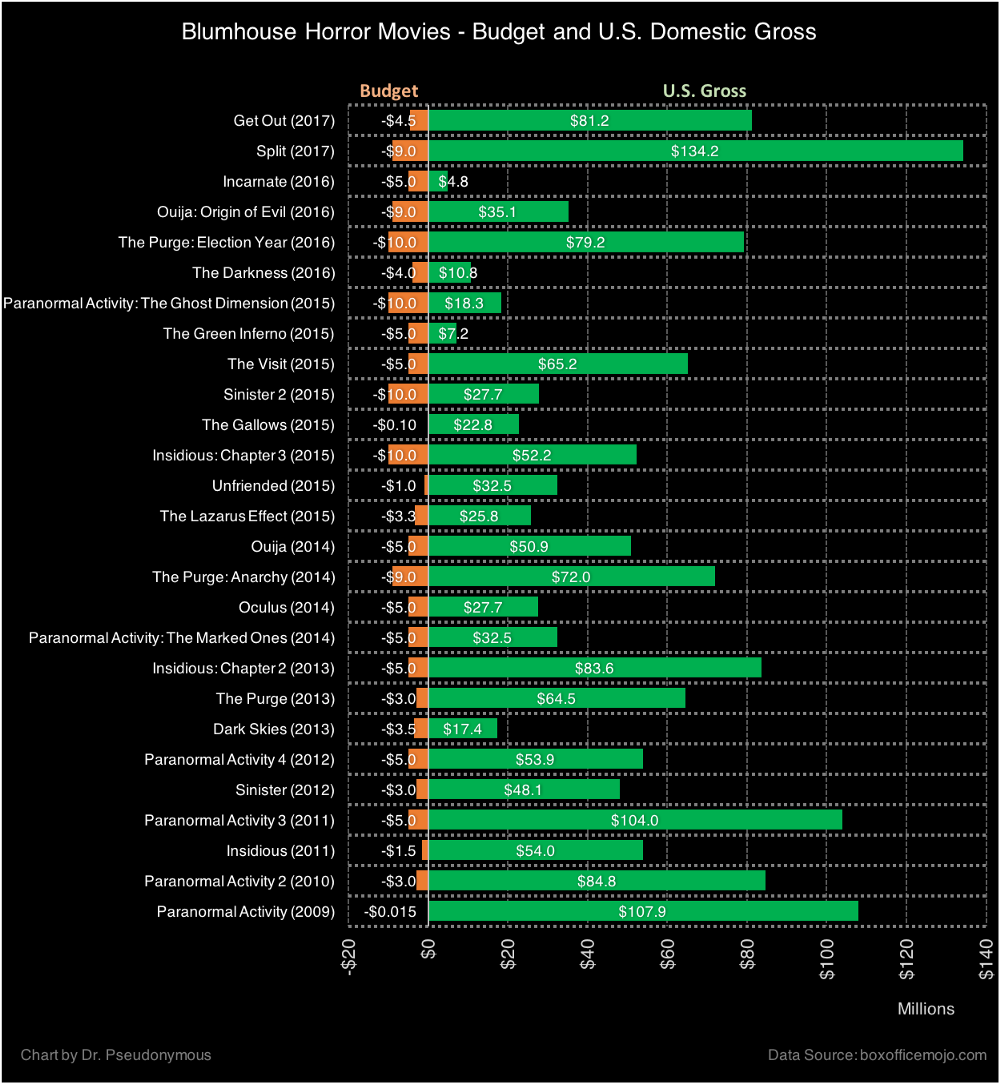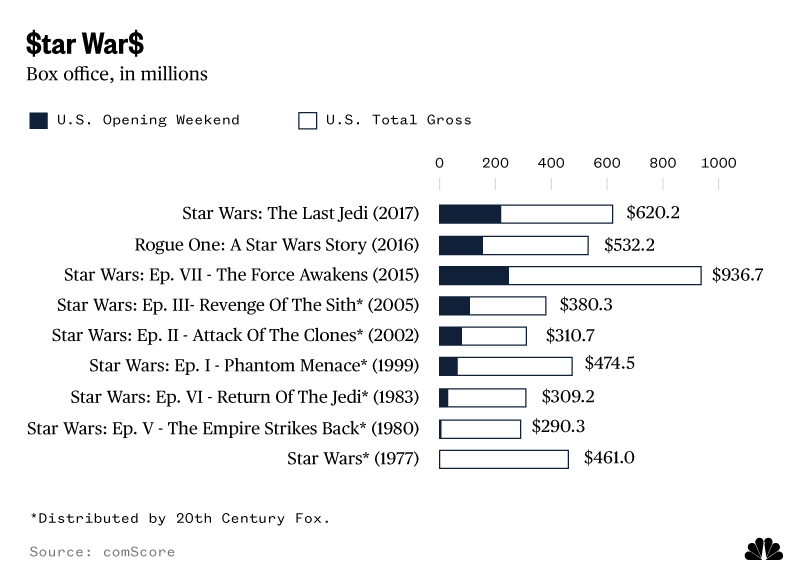Five Easy Pieces — Blumhouse, not Netflix, is the film production innovator to watch
A process for taking a chance on stories
Executive summary
Since entering the business of production, Netflix has spent and plans to spend many more billions on new films and series for its platform, and some say it’s changing the way films are made. But there is another, much less known, production house that, to me, is far more interesting to watch. Counter-intuitively, Blumhouse Productions comparatively minimal budgets and its production process lets it make bets on stories in a way that Hollywood hasn’t been able to in decades. Its process gives directors creative freedom to tell the best story possible—because for Blumhouse, it is the story that counts, not big-ticket actors. In fact, its low budgets is such a strong competitive advantage that it in practice has barely any competition within its niche.
A process for taking a chance on stories
Blumhouse Productions
Established by Jason Blum in 2000, Blumhouse Productions is a film and television production company best known for its unique way of producing low budget films that get mainstream release and generate massive box office returns. Mainly focused on the horror genre, its recent productions include Get Out, Insidious, The Purge, Split, Happy Death Day, Upgrade, Paranormal Activity, Sinister and The Gift. Two Blumhouse films, Whiplash in 2014 and Get Out in 2017, have earned nominations for the Academy Award for Best Picture. Its first real success was the Paranormal Activity series, of which the first part grossed $193M on a $15K budget, and since then it has regularly produced films that give returns matched only by the Star Wars franchise.
Integrity of the story
Among Blumhouse’s key insights are: story is key; directors want freedom; only low budgets can provide that freedom . Film is really just a vehicle for storytelling, and it is the integrity and uniqueness of the story, rather than production values and star actors, that ultimately decides if a movie succeeds. By experience, Jason Blum knew that when studios and producers meddle in a production, the story is inevitably weakened and so is its box office performance. For directors to get the control necessary to preserve the integrity of their vision, producers must give it to them. Producers are typically fearful of giving up control because of they are afraid that creative but not so business-minded directors will create a film that flops.
The deal: creative freedom
Imagine yourself as the producer putting up money for a film to be made. How can you as a producer find the trust required to hand over control of the film to your director? First, you limit risks by keeping the budget low so that you can afford a miss. Then, align incentives by designing a deal where the director foregoes their fee and instead owns part of the box office returns. Then, find a director with something to prove—because then you know they’ll do their best work possible. Blumhouse has typically worked with directors who have fallen form grace, like M. Night Shyamalan who went from star in the early 2000s, to has-been, and back to star with Split (2016).
Budget and distribution
Evolving over time, Blumhouse’s current budget for new productions is $5M, and $10M for sequels. Directors and actors get scale (a percentage of profits) if they come in below budgets. How a film is distributed is decided by Blumhouse together with the director, and with Universal Pictures, with whom the company signed a 10-year first-look deal in 2014, through internal screenings and then audience previews. The most promising productions see a mainstream release in U.S. theaters backed by a $30M marketing budget. Less confidence-inspiring films go directly to Netflix with few or no theatrical showings.
Returns
Blumhouse’s process started taking shape after the release of the first Paranormal Activity, which was turned into a six-film franchise earning a total of $900M. Since then, it has created the Insidious and The Purge franchises, each of which has made more than $300M over 3 films. M. Night Shyamalan’s standalone hit The Visit made close to $100M on a $5M budget. In 2017, its biggest hits to date were released, with Split earning $280M on a $9M budget, and Get Out $253M on a $4.5M budget. In comparison, Star Wars: The Last Jedi made $620M, but it cost around $300M to make. Blumhouse has not only found a repeatable process for producing box office hits with the highest return in the industry, but also created a position for itself where it has no competition — because the large studios simply cannot adopt a model that is the opposite of what their organizations are built for: big budgets and films packed with star actors.



